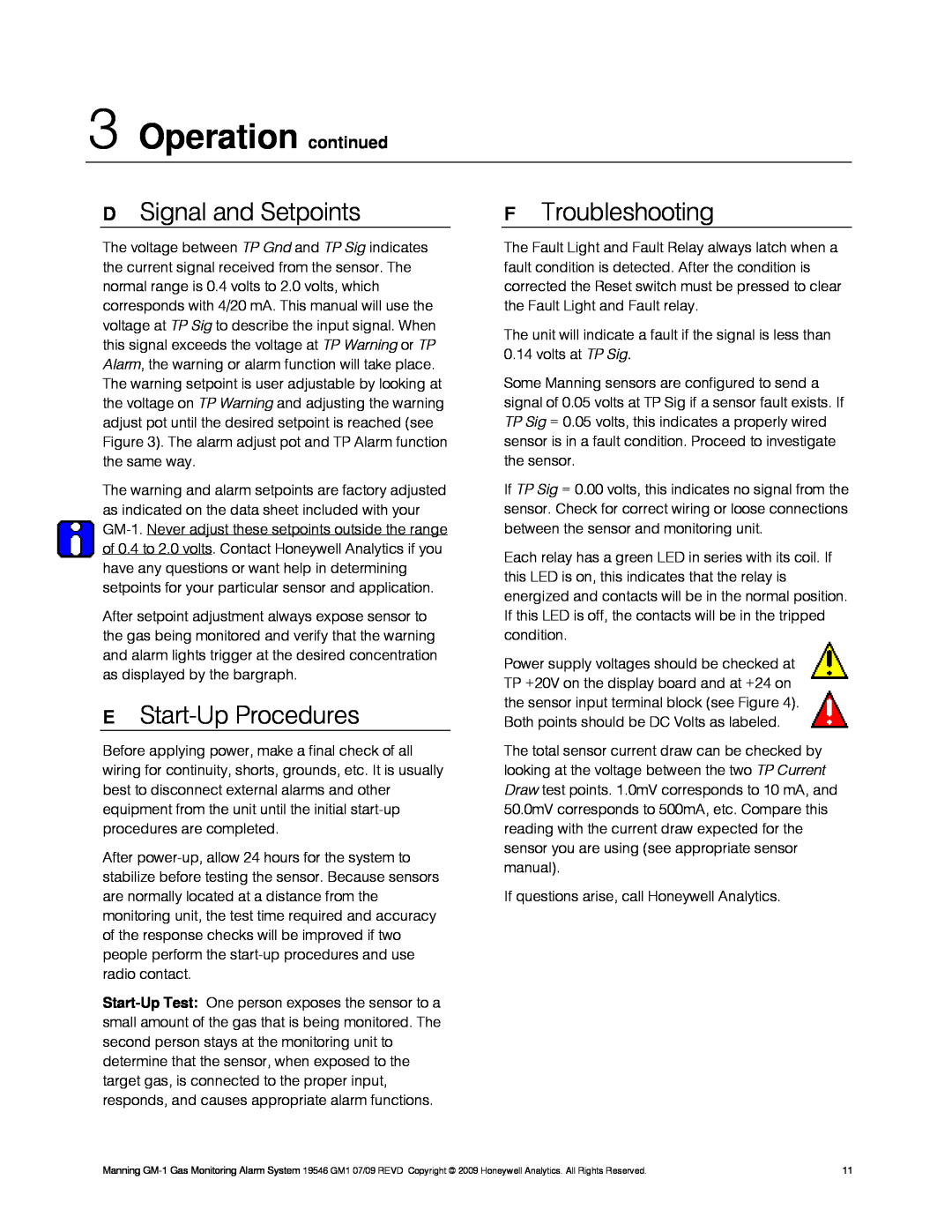
3 Operation continued
DSignal and Setpoints
The voltage between TP Gnd and TP Sig indicates the current signal received from the sensor. The normal range is 0.4 volts to 2.0 volts, which corresponds with 4/20 mA. This manual will use the voltage at TP Sig to describe the input signal. When this signal exceeds the voltage at TP Warning or TP Alarm, the warning or alarm function will take place. The warning setpoint is user adjustable by looking at the voltage on TP Warning and adjusting the warning adjust pot until the desired setpoint is reached (see Figure 3). The alarm adjust pot and TP Alarm function the same way.
The warning and alarm setpoints are factory adjusted as indicated on the data sheet included with your
After setpoint adjustment always expose sensor to the gas being monitored and verify that the warning and alarm lights trigger at the desired concentration as displayed by the bargraph.
EStart-Up Procedures
Before applying power, make a final check of all wiring for continuity, shorts, grounds, etc. It is usually best to disconnect external alarms and other equipment from the unit until the initial
After
FTroubleshooting
The Fault Light and Fault Relay always latch when a fault condition is detected. After the condition is corrected the Reset switch must be pressed to clear the Fault Light and Fault relay.
The unit will indicate a fault if the signal is less than 0.14 volts at TP Sig.
Some Manning sensors are configured to send a signal of 0.05 volts at TP Sig if a sensor fault exists. If TP Sig = 0.05 volts, this indicates a properly wired sensor is in a fault condition. Proceed to investigate the sensor.
If TP Sig = 0.00 volts, this indicates no signal from the sensor. Check for correct wiring or loose connections between the sensor and monitoring unit.
Each relay has a green LED in series with its coil. If this LED is on, this indicates that the relay is energized and contacts will be in the normal position. If this LED is off, the contacts will be in the tripped condition.
Power supply voltages should be checked at TP +20V on the display board and at +24 on the sensor input terminal block (see Figure 4). Both points should be DC Volts as labeled.
The total sensor current draw can be checked by looking at the voltage between the two TP Current Draw test points. 1.0mV corresponds to 10 mA, and 50.0mV corresponds to 500mA, etc. Compare this reading with the current draw expected for the sensor you are using (see appropriate sensor manual).
If questions arise, call Honeywell Analytics.
Manning | 11 |
